Source: Theology That Sticks
May 26, 2016
In 2013 urban developers in the Turkish city of Nevşehir discovered a massive underground city. The surrounding region is pocked and riddled with such hideaways, but this is one of the largest ever found. Working at the site, archeologists have since unearthed a fifteen-hundred-year-old church with icons depicting Christ’s crucifixion, his ascension, and the Last Judgment.
News outlets showed tremendous interest in the images. The same has happened with other recent iconographic discoveries, including one in the Church of the Nativity unseen since the days of the Crusades and the oldest image of Mary, found in a third-century Syrian house church. But many Christians look at such finds as more than archeological novelties. They are objects of devotion, images that reveal God’s personal involvement in the world.
Is such divine depiction even possible? God is spirit and invisible, after all. “You cannot see my face,” he says in Exodus, “for man shall not see me and live” (33.20). John picks this up in the first chapter of his gospel. “No one has ever seen God,” says the evangelist in verse 18.
What the Incarnation means
Prior to the Incarnation, to see God was to spy an angel representing him. There are several instances of this in the Old Testament—Jacob wrestling with God, Moses catching a glimpse of his retreating form, and others. We call these theophanies or divine appearances. But then came Christ in the flesh.
If Christ is God, as Christians say, then God became visible in the Incarnation. John records an exchange between Jesus and his disciple Philip that underscores the point. “He who has seen me has seen the Father” (14.9). In Jesus God walked among people and lived in their sight. If you had your mobile, you could have Instagrammed him.
Ancient Christian writers use exactly this logic to explain their use of icons. “How could the invisible be depicted? How could the unimaginable be portrayed?” asks John Damascene in his Third Treatise on the Divine Images. “For it is now clear that you cannot depict the invisible God.” But, he adds, “[w]hen you see the bodiless become human for your sake, then you may accomplish the figure of a human form; when the invisible becomes visible in the flesh, then you may depict the likeness of something seen. . . .” Pointing to the saving deeds of the Incarnate Son, he says, “Depict all these in words and in colors” (8).
The desire to depict manifested early and everywhere. Roman catacombs featured icons of Christ, Mary, and many other biblical figures by the third century. Finds in Syria date to the same period. Traditionally, the evangelist Luke is considered the first iconographer, though iconographic depictions don’t appear in the archeological record until the year 200.
“At the beginning of the third century,” says Paul Corby Finney in The Invisible God, “Christians inhabiting widely disparate parts of the [Roman] Empire gradually (and it seems simultaneously) began to experiment with distinctive expressions that gave material identity to their religious beliefs and aspirations.” He cites examples from Italy, Sardinia, Malta, Egypt, North Africa, and Asia Minor.
The fact that icons, frescoes, and mosaics exist in all the ancient Christian traditions to this day (Catholic, Orthodox, Syriac, Coptic, Ethiopian, Malankara, and so on) indicates early, spontaneous, and widespread adoption of divine depictions. The ancient believers, says Finney, “were not iconophobes.”
The icon smashers
The only significant challenge icons faced in the first millennium followed the rise of Islam in the eastern iconoclastic controversy (western churches were spared the disruption at the time). But note the noun. “Controversy” indicates less than universal agreement, and, importantly, the icon-smashers lost the argument. Icons and frescoes were restored after the Seventh Ecumenical Council in 787.
Iconoclasm did eventually come to the West. Before the Reformation, many churches in Europe were decorated just as those in the East. You can see examples from Danish churches here. Less refined than Byzantine counterparts, they nonetheless vividly depict scenes from the life of Christ, the Creation, Last Judgment, and much more. Churches across the continent were similarly and even more elaborately decorated. In his multipart documentary A History of Britain, Simon Schama reconstructs a pre-Reformation English church. Though grounded in a contemporary account, it could only be an an imaginative recreation. Many Protestants favored imageless churches and swept structures clean of icons, scraping frescoes off church walls, toppling statues, and destroying altarpieces.
The argument for doing so then (as now) goes back to the Second Commandment’s prohibition on graven images—but relies on an interpretation divorced from over a millennium of Christian teaching and practice. From Ireland to India, Ethiopia to Scandinavia, Christians depicted Christ and his saints. None of these believers ignored the Second Commandment. They just understood it differently than did eastern or western iconoclasts. John Damascene, for one example, deals explicitly with the commandment and still strongly upholds the use of images.
The icon of the invisible God
It seems to me there is also a wooden literalism at play. The preference for the “word” of God to the exclusion of images of Christ misses the fact thatdabar (Hebrew) and logos (Greek) both indicate more than mere words; they can indicate an act, a way of being, an ordering principle. In other words, more than mere text.
And even text is more than mere text, as I’ve heard Fr. Stephen Freeman argue. What are letters and words but icons themselves? An icon points to a reality beyond itself. An icon of Jesus is not Jesus, but a window to him. Similarly, the word “Jesus” on a page isn’t Jesus, but a sign that points to him. It might be easy to forget this point since our alphabet is rather abstracted, but remember that the letters we use originated several thousand years ago as pictographs.
Beyond that, of course, when we speak of the word of God we are ultimately speaking of more than mere text anyway. We are speaking of Jesus, “the image [i.e., the icon] of the invisible God” (Col 1.15). People have not only seen God, but we will also one day see him again. In the meantime, we remember his earthly ministry and eternal rule by reflecting upon scripture, singing hymns, and beholding images of Christ and the saints who called him Lord and friend.

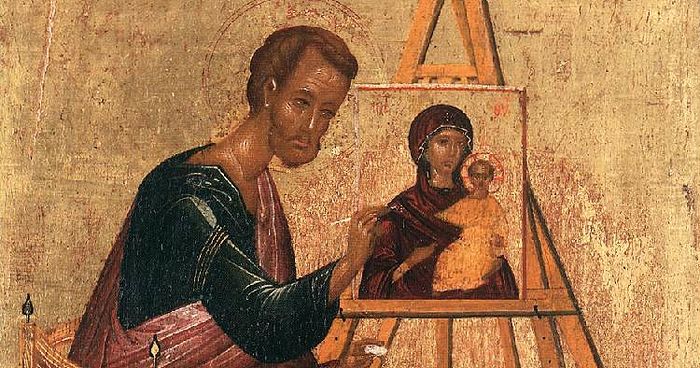
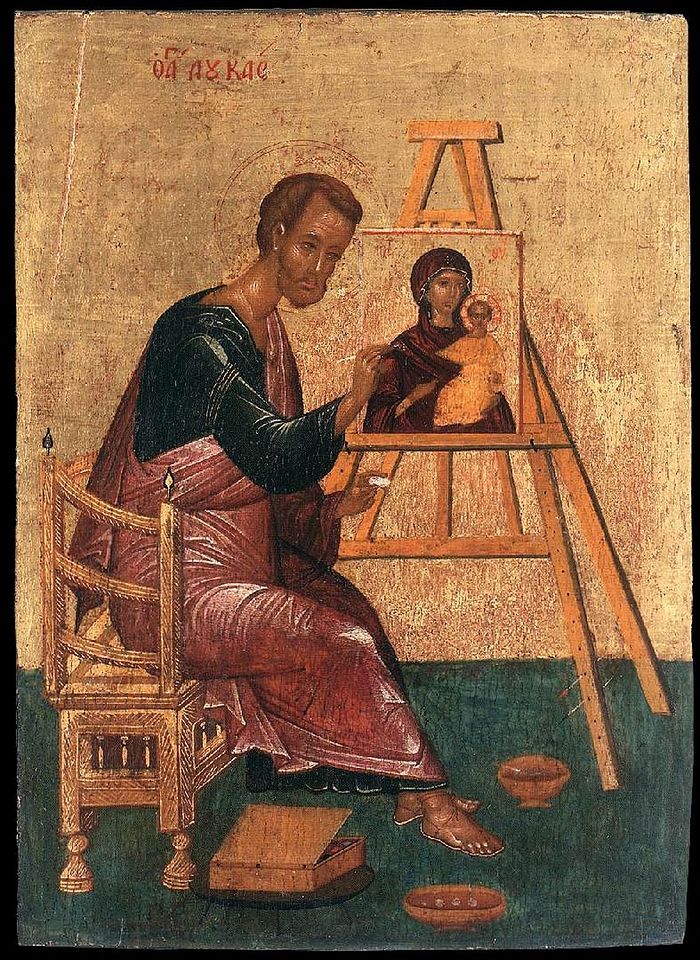
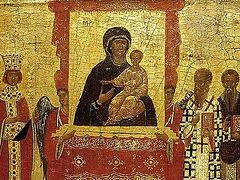
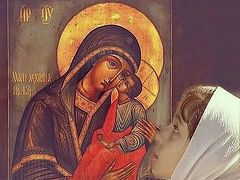
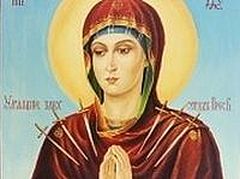
Kinly I need your advice and information about the attached Christian icon pictures . The icon has been painted on wood and a layer of white gypsum , also it has a thin flakes of gold still on it . The icon has a name or greek word beside the neck of glory Mary . It was placed in wood frame with door. Its size 33 Ч 27 cm. Also you can feel the prominent of the drawing with your fingers.
Kindly I need to knew its age , century and average price if it is possible .
Best regards
https://i.imgsafe.org/21bda957d7.jpg
https://i.imgsafe.org/21c1f0822d.jpg
https://i.imgsafe.org/21c5e8a634.jpg
https://i.imgsafe.org/21ca51d462.jpg
https://i.imgsafe.org/21cde685ed.jpg
https://i.imgsafe.org/21d16b2a17.jpg